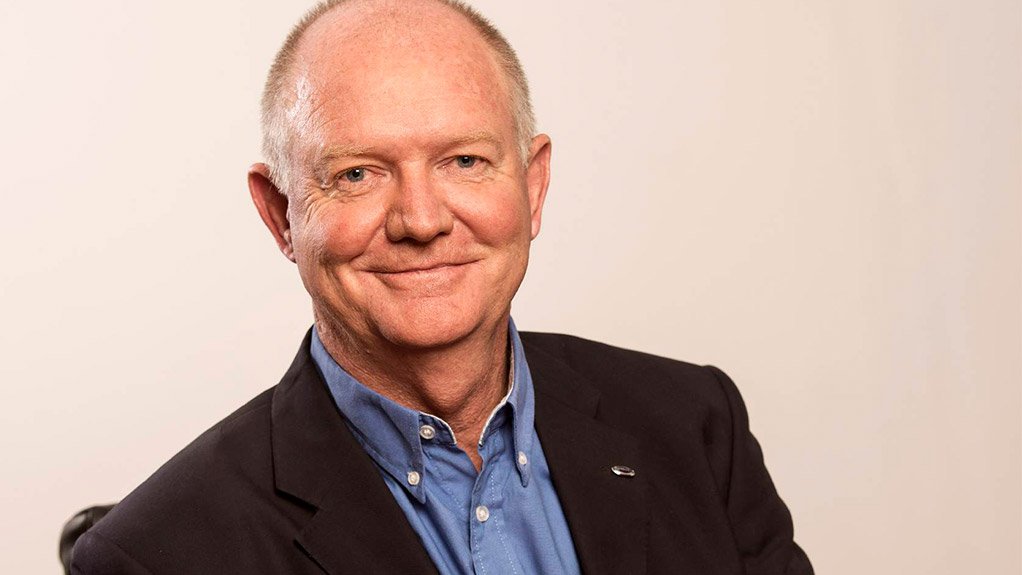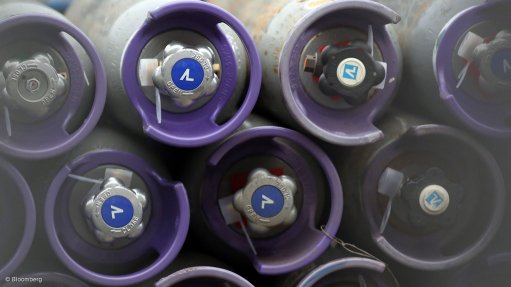Value-for-money motoring entrenched in 2017
This article has been supplied as a media statement and is not written by Creamer Media. It may be available only for a limited time on this website.
The 2017 motoring year will mark the entrenchment of value-added, stylish cars in the South African market, predicts Datsun South Africa General Manager, Des Fenner, as he assesses the changes taking place in local car buying circles.
The 2017 motoring year promises to be challenging for South African drivers. Against the undoubted appeal of new cars and exciting technologies, lie the practical issues - the fact that the economy is under-performing, household budgets remain under pressure and car-related costs are rising. The good news, though, is that South Africans are practical people who will not allow their passion for vehicles to be dimmed by what are, after all, cyclical events that will change in the future.
For the local car industry times will be tough in 2017. However, as is the case in most economic downturns, the market for luxury vehicles will be slightly dented, but will remain fairly buoyant. For many, the demand of the times will see a shift in purchasing patterns.
The pre-owned market will perform better. There will also be greater opportunities for manufacturers of ’A’ and ‘B’ segment cars. For Datsun South Africa, this will mean increased opportunities for the Datsun GO entry-level sedan, and the more recently introduced Datsun GO+ multi-purpose vehicle (MPV) which has already made an impression in the market.
Naturally, practical issues, primarily affordability and maintenance costs, play a part in the purchasing of these cars. Socio-economic issues also cannot be discounted. The introduction of value-added vehicles has opened new classes of car ownership in South Africa; more people in the emerging middle class have acquired cars of their own. This has translated directly into mobility, fewer hours spent commuting and more opportunities to participate in the economy.
Besides improved economic opportunities, this is creating a larger base of motorists who will be looking into ‘buying-up’ from ‘A’ segment to ‘B’ segment as their family circumstances change.
But for the average motorist, it is the competitiveness of the ‘A’ and ‘B’ markets themselves that is building the growing popularity of these cars. In 2017 and beyond it is competitiveness that will create ongoing interest in these categories.
The simple reason is that the word ‘utility’ has disappeared from the descriptor used for these cars. Instead of being a basic shell, offerings in today’s ‘A’ and ‘B’ markets have features that were, not so long ago, the preserve of more luxurious vehicles. Driving pleasure and versatility have also reinforced the value that drivers see in these two segments.
With model availability being reviewed and expanded, natural ‘in brand’ growth is also accommodated for. Buying a Datsun GO in the ‘A’ segment no longer restricts a buyer to looking elsewhere when considering an upgrade. Moving into a Datsun GO+ MPV, which also - competes in the ‘A’ segment, as family requirements dictate becomes natural. The benefits of staying with a particular marque, which includes generally higher trade-in values, make the transition easy - especially where one’s pocket is concerned.
Savvy buyers are also recognising that there is more to owning a car than just the costs of the car itself. The added costs of insurance, maintenance and repairs also have to be considered as part of the bigger picture. It is here that the practical reinforces the pleasure of driving, say a Datsun GO+ which can be configured to carry up to seven people in comfort and grow with a family’s needs.
It is comforting to know that spares availability is backed by a national network of dealers and that maintenance costs won’t break the bank.
In 2016, the Datsun GO was acknowledged in the authoritative Kinsey Report as the country’s most affordable car. For the second year in a row, the Datsun GO was assessed in three categories. These were:
- Category A (Service Items): covering everyday replaceable items, such as air filters, spark/glow plugs, brake pads/shoes and wiper blades
- Category B (Repair Parts): covering major items, such as cam belts, shock absorbers, clutch and pressure plates, flywheels, and fan belts
- Category C (Crash Parts): this looks at major replacement body costs, such as bonnets, grilles, doors, fenders and bumper skins, and light assemblies
When all costs listed were taken into account, the ‘tale of the motoring tape’ revealed that:
• The total for the Datsun GO cost basket was R 43 193.
• The second most affordable competitor was the Nissan Micra, at R 55 071.
• The most expensive vehicle in the category came in at R 75 338.
The local market in South Africa began turning towards the benefits of the broadly categorised ‘city car’ sector (‘A’ and ‘B’ segments) about four years ago. Datsun entered this market with the GO in 2014, and believes that, as long as motorists seek value, the sector will remain a force to be reckoned with in the future.
For more Datsun news and information visit the Datsun website on www.datsun.co.za, like our Facebook page www.facebook.com/datsunsa, view our YouTube site on www.youtube.com/datsunsa, find us on Instagram at www.instagram.com/datsunsa and/or follow #Datsunisback on Twitter.
Datsun History
Datsun originated in Japan as DAT-GO (the DAT-car) almost a century ago in 1914. The word DAT means ‘lightning-fast’ in Japanese but is also a reference to the three financiers who supported the business at the time – namely Mssrs. Den, Aoyama and Takeuchi – an acronym of the first letter of each name. Using the same logic, it was promoted as Durable, Attractive and Trustworthy, or DAT for short.
In 1933, Nissan’s founding father Yoshisuke Aikawa took over the business with a vision of “mobility for all”. The introduction of a light-weight, economical yet resilient car to meet the aspirations of young Japanese people in the early 1930s was named the ‘son of DAT’ – Datson - which later changed to Datsun. Local engineering and mass-production made the founder’s dream a reality.
Datsun Today
Nissan Motor Co., Ltd. announced the return of the Datsun brand, Nissan's third global brand, alongside Nissan and Infiniti, in March 2012. Datsun will provide a sustainable motoring experience to optimistic up-and-coming customers in high-growth markets. Datsun represents 80 years of accumulated Japanese car-making expertise and is an important part of Nissan's DNA. Datsun already started sales in India and Indonesia, while sales in Russia and South Africa will commence later in 2014
About Nissan Motor in South Africa
Nissan South Africa is the operational hub for Regional Business Unit South, serving Nissan’s key South Africa market and 42 other countries in Africa, including Angola, Ghana, Kenya and Nigeria. In South Africa, the company offers a range of 28 vehicles under the Nissan and Infiniti brands, including the popular locally-produced Nissan light commercial vehicles - the NP200 half ton pickup and NP300 one-ton Hardbody – produced at the company’s Rosslyn plant, north west of Pretoria. In 2013, the company made history with the introduction of South Africa’s first electric vehicle, Nissan’s flagship Nissan LEAF.
This will be followed in 2014 by the reintroduction of the iconic Datsun brand, as well as the launch of the new Qashqai crossover and new X-Trail sports utility vehicle. Nissan South Africa is one of the top five automotive companies in South Africa. For more information visit our website at www.nissan.co.za
Comments
Press Office
Announcements
What's On
Subscribe to improve your user experience...
Option 1 (equivalent of R125 a month):
Receive a weekly copy of Creamer Media's Engineering News & Mining Weekly magazine
(print copy for those in South Africa and e-magazine for those outside of South Africa)
Receive daily email newsletters
Access to full search results
Access archive of magazine back copies
Access to Projects in Progress
Access to ONE Research Report of your choice in PDF format
Option 2 (equivalent of R375 a month):
All benefits from Option 1
PLUS
Access to Creamer Media's Research Channel Africa for ALL Research Reports, in PDF format, on various industrial and mining sectors
including Electricity; Water; Energy Transition; Hydrogen; Roads, Rail and Ports; Coal; Gold; Platinum; Battery Metals; etc.
Already a subscriber?
Forgotten your password?
Receive weekly copy of Creamer Media's Engineering News & Mining Weekly magazine (print copy for those in South Africa and e-magazine for those outside of South Africa)
➕
Recieve daily email newsletters
➕
Access to full search results
➕
Access archive of magazine back copies
➕
Access to Projects in Progress
➕
Access to ONE Research Report of your choice in PDF format
RESEARCH CHANNEL AFRICA
R4500 (equivalent of R375 a month)
SUBSCRIBEAll benefits from Option 1
➕
Access to Creamer Media's Research Channel Africa for ALL Research Reports on various industrial and mining sectors, in PDF format, including on:
Electricity
➕
Water
➕
Energy Transition
➕
Hydrogen
➕
Roads, Rail and Ports
➕
Coal
➕
Gold
➕
Platinum
➕
Battery Metals
➕
etc.
Receive all benefits from Option 1 or Option 2 delivered to numerous people at your company
➕
Multiple User names and Passwords for simultaneous log-ins
➕
Intranet integration access to all in your organisation





















